Roam freely and safely in Syria in 2010
Part 2
B 7 – Aleppo - the old capital and the largest city
Aleppo, located at the north-west, is also a very old city, the largest in Syria with about 2.2 million people. For centuries it was the largest city in the region because of its location at one end of the Silk Road. When the Suez Canal was inaugurated in 1869, much trade was diverted to the sea and Aleppo began its slow decline. The old city is also a UNESCO World Heritage Site.
(Note in 2021: Aleppo is one of most affected cities in the current civil war, especially in street warfare, resulting in great damage to buildings and the economy. Since 2016 the city was back to the control of the government forces. Current population is estimated as 1.8 million, and it is now the 2nd largest city, after Damascus.)
Street scenes and the iconic clock tower built in 1899. Many satellite dishes on the roof and many taxis, meaning most people could not afford private cars.
The Citadel
This is a large fortified palace at the old city centre dated to some 5,000 years ago. The current edition is dated to the late 12th century. We did not go inside.
National Museum of Aleppo
The museum was founded in 1931 and the present building constructed in 1968. The emphasis is on archaeology, with items found mostly in the northern part of the country. Shown items of Islamic art, 2 figurines from a place called Mari, civilisation dated to 2900 BC – 1700 BC, and an Egyptian-like figurine dated to 1400 BC to 1150 BC.
Grand Mosque of Aleppo
The mosque was founded in 717. The present building dates back to the 11th through 14th centuries. The single minaret was added in 1087.
(Note in 2021: the minaret was destroyed in 2013 during the current civil war)
Hospital Arghun Al-Kamili
This is a hospital built in 1354. Arghun Al-Kamili is the name of the local governor of the Mumluk Dynasty. Because it was built in stone the hospital is still in very good shape. It has several courtyards and many rooms. The emphasis is on mental health patients, with treatment rooms using music, water flows, etc. Matching fountain and lamp.
The Christian Quarters
The Christians make up 12% of the population, totalling about 250,000. The 2 of us roamed around the old Christian Quarter for 2+ hours, a labyrinth of narrow alleys. Of course the so-called Christian Quarter is only one of the many districts with Christian majorities. Overall there are some 50 churches in the city, represented by many denominations. Shown a directional signboard at the Christian Quarters.
The 1st 2 photos show the façade of Forty Martyrs Armenian Cathedral, built in 1491. The next 2 show the interior of the Cathedral of St Elijah, an Eastern Maronite Catholic church built in 1873.
Church of St Francis of Assisi
This is a Roman Catholic Cathedral located outside the Christian Quarters. The church was consecrated in 1937, built in neo-classical style. We attended a special mass for youths. We are young too. Took a photo with the priest.
Al-Madina Souq
A souq is a street market in the Arab world. The covered market lanes of this Al-Madina Souq total 13 km, the biggest market in the World. It is divided into sections according to the type of goods. Even high-end imported consumer goods are sold here. There are no
female shopkeepers here. Women’s under garments are sold by men. Shown with 2 of our Malay members.
The pomegranate is in season, sweet and juicy, and cheap. It has become our usual drink on the tour. A tall glass cost about RM 2.
B 8 – the Dead Cities of Syria
the Dead Cities are a group of 700 abandoned settlements in north-west Syria most of which flourished from the 1st to 7th centuries and abandoned between the 8th and 10th centuries. They are located over an elevated limestone area about 120 km by 30 km. 40 of the villages are grouped as a UNESCO World Heritage Site, included the two ruins covered here.
Mount Simeon - ancient ruin near Aleppo
The ruin of the Church of St Simeon is located about 30 km north-west of Aleppo. The saint, Simeon Stylites the Elder (386-459), was an ascetic who lived on a small platform above a pillar. This St Simeon was the first one to start the tradition. He stayed alone above a pillar for a continuous 37 years, until he died at the age of about 70, praying, preaching and counselling. Even the Roman emperors sought for his counsel. He has many imitators in the next centuries.
A huge church complex was built here in the 6th century to honour him, with 4 churches, monasteries, etc, with the pillar of St Simeon at the centre. The complex is now in ruins. The 1st photo shows the south façade, the 3rd the round baptistery, the 4th shows the remaining part of the pillar of St Simeon, originally some 12 to 15 m tall, now reduced to about 2 m due to pilgrims chipping off small pieces as a souvenir over the centuries.
More of the ruins and some decorative details of the components.
Serjilla – a well preserved village
Serjilla is located about 80 km south west of Aleppo, a well preserved settlement. We were at a corner of the village only. It was abandoned in the 8th century after the conquest of the Muslims. Shown a general view, a 2-storey villa, an olive-press room and a sarcophagus.
The 1st photo shows part of the public bath, and other ruins.
B 9 – Apamea – another Roman ruin
Our next destination is Hama, but 55 km from Hama is this ruin of Apamea. This Roman city was destroyed by the Persians in the 6th century, not by the Muslims. The only monument I wish to elaborate is the main street, the Great Colonnade which is almost 2 km long. One of the longest colonnades in the Roman World. The colonnade was rebuilt and completed in the early 3rd century when the original was destroyed in the 115 AD earthquake. The columns are 9 m high and 0.9 m in diameter. The columns are of 2 types, plain and the uncommon spiral-flutes, as shown in the 2nd photo. Both types with Corinthian capitals.
B 10 - Hama - a modern city famous for its ancient giant waterwheels
Hama is a city in west-central Syria, some 210 km north of Damascus, with a population of 850,000. The city is famous for its giant waterwheels, called “noria”. These were used for irrigation purposes, dating to over 1,600 years ago. There are 17 left, most of them constructed in the 14th and 15th centuries. The largest two are 20 m in diameter. Most are not functioning now. The last photo is the iconic clock tower at the old city centre built during the Ottoman era and rebuilt in the 1980s. The waterwheels are nearby.
B 11 - Castle of Saladin - the fortress built in the 10th century
Our next stop is Latakia, the port city some 150 km south west of Aleppo. 30 km from Latakia is this Castle of Saladin, together with the Crusaders’ Castle, forming a UNESCO World Heritage Site. The castle was first established in the mid-10th century. The Crusaders took over control in 1108 and greatly expanded and fortified it. In 1188 it fell to the forces of the Ayyubid sultan Saladin and it was re-named the Caste of Saladin.
The castle sits on a spur about 700 m long and 120 m wide at one end. The keep, the strongest part of the castle for last defence, has walls 5 m thick. The most unusual feature is that on the eastern end there is a man-made ditch cut into the solid rock, near to 28 m deep, 156 m long and 14 to 20 m wide. All cut into rock, with a lone pillar standing to support the drawbridge above, 3rd and 4th photos.
The mosque and minaret added by Saladin’s forces and the remains of an olive press.
B 12 – Latakia – a sea port
Latakia is a sea port where we spent a night. Two shots around our hotel.
Ugarit
At the outskirt of Latakia is the ruins of the old sea port of Ugarit the civilisation flourished from around 6,000 to 1,185 BC. Archaeological excavation since 1928 yielded many clay tablets showing that the Ugarit civilisation used the Ugarit alphabet system of writing dating to 1,400 BC, and making it the earliest alphabet writing system in the World. It consists of 30 letters, each corresponding to a different sound. The Ugarit language is now extinct.
We visited the ruins of the palace, part of the excavation area.
B 13 - Krak des Chevaliers - a giant Crusaders’ castle north of Homs
The Krak des Chevaliers (Crusaders' Castle) is a huge medieval castle atop a 650 m high hill, 40 km west of the city of Homs in western Syria, close to the border with Lebanon. It was built by the Crusaders around the 12th century. Nearly 10 acres in size with facility to house up to 2,000 people, this is one of the biggest castles ever built on Planet Earth. It fell to the Muslim troops in 1271 and soon faded into oblivion as it lost its strategic importance. Grouped together with the Castle of Saladin, they make a UNESCO World Heritage Site.
Take note of the size of the people at the top platforms in the 1st photo to appreciate how massive the castle is. The 2nd photo shows the inner court as seen from the south. The 3rd and 4th photo how the platform between the outer castle and the inner ward.
The 2nd photo shows the vaulted Gothic design for some buildings. The 3rd photo shows the Hall of the Knights and the last shows the Christian chapel. At the time of our visit, there was a priest leading a group praying at the chapel.
Part C : Footnote - some general observations
Our tour of Syria is ended. Next we would move over to Lebanon, that is another story.
And now some observations.
C 1 - Allah is my God
Syria has a population of about 22 millions, 87% Muslims and 10% Christians. Churches are everywhere. We attended a Sunday mass at the Cathedral of St Francis of Assisi in Aleppo, a Roman Catholic church. Service was conducted in Arabic and Allah is the name of my Christian God. We have been to the Palestinian Territories and Jordan previously, and in both these Arabic-speaking regions, Allah is my Christian God too. But in non-Arabic speaking Malaysia, Allah could not be my Christian God. Malaysia Mana Boleh?
(Note in 2021: around 2009, a Malaysia court banned the use of the word “Allah” to mean the Christian god. Still a hot topic in 2010.)
C 2 - Yahya is my prophet
In Damascus we visited the Umayyad Mosque, one of the largest, oldest and holiest mosques in the World. We non-Muslims, including women, were allowed inside the sanctuary but in Malaysia we may not be allowed to go into a simple surau! Near the centre of the building is a memorial dedicated to St John the Baptist or Yahya (his name in Arabic). The head of the saint was said to be buried here. St John or Yahya is also a prophet revered in Islam. So Yahya is my prophet. Murhaf, our very knowledgeable tour guide, bluntly said that the Jews, Christians and Muslims worship the same god. But of course you can't say that in Malaysia. Malaysia Mana Boleh?
There are 3 minarets for this Umayyad Mosque. The tallest was the one at the eastern corner, 77 meters tall and built in 1247. And the name: Minaret of Jesus (Madhanat Isa). Of course Jesus is a highly revered prophet in Islam. It seems a certain hadith mentioned that Isa would return to Earth in his second coming via the Minaret of Isa. Shown posing at the mihrah in the sanctuary, and part of the outer wall of the mosque and the Minaret of Jesus.
C 3 - Less developed country
Syria is less developed compared to Malaysia, could be 15 or 20 years behind us.
Shown petition writers on the street in Damascus. This profession has probably become extinct in Malaysia some 20 years ago.
C 4 - Good all round exercises
This free-n-easy tour provides a good exercise for the travellers. Not only we walked a lot, we regularly exercised our hands and our mouths too. Hands? Yes, we have to raise and wave our hands to the locals in response to their waving at us. Mouth? We have to exercise our mouths to play "hi" with them, remember how to play “hi”, ladies?
C 5 – The infidels
Despite the USA being Syria’s number one enemy, consumer goods from America could still be found. You could have Pepsi Cola, or KFC. The Stallone poster was probably a gym advertisement.
C 6 - The YonGo special
The tour is organised by YonGo (www.yongo.biz). The tour group is a compact-sized 16. During the journey on the bus, a fellow traveller (lawyer-turned-conservationist) gave us a lecture of the life of the endangered turtles and a doctor taught us how to deal with stomach upsets while on tour. Taking "Lomotil" is not the best option. Anything to do with "til" is not good, the still-single Cantonese doctor said. Thank you, Cik Rahayu and Dr Edmund. And thanks to our tour leader Yazmi and the local guide Murhaf too. A group photo on the highway to Qasr al-Hayr al-Sharqi. The highway is all ours, or our grandpas’.
That is all, folks. Hope you enjoy reading my unconventional account.
(Note in 2021: we are indeed very lucky to have visited Syria before the current civil war. We went in September 2010 and six months later, in March 2011 the unrest started, initially with massive demonstration, then turned into violent confrontation and later full scale wars.)
(First written in the email format in October 2010. Heavily revised to this PDF format in July 2021)





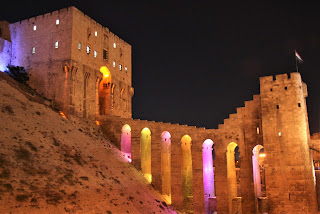













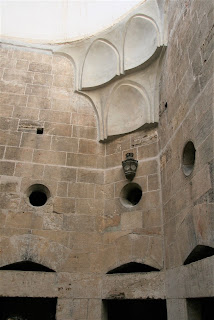





















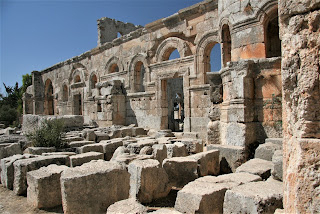





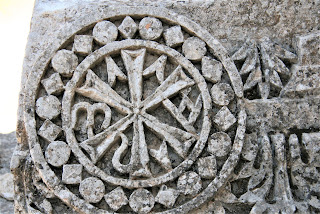

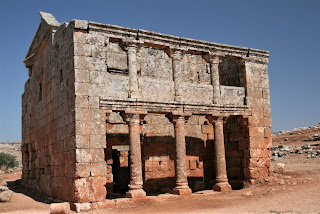





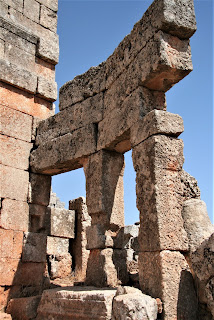




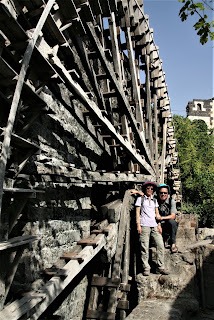




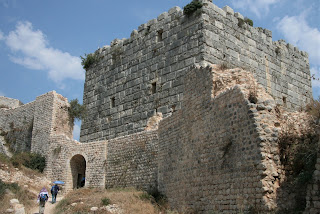

















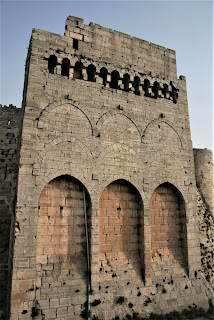







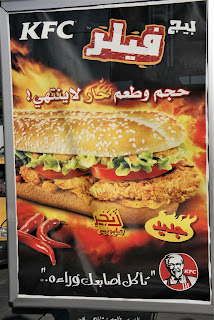


No comments:
Post a Comment